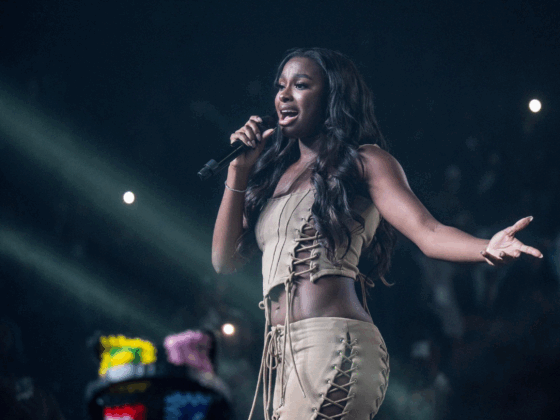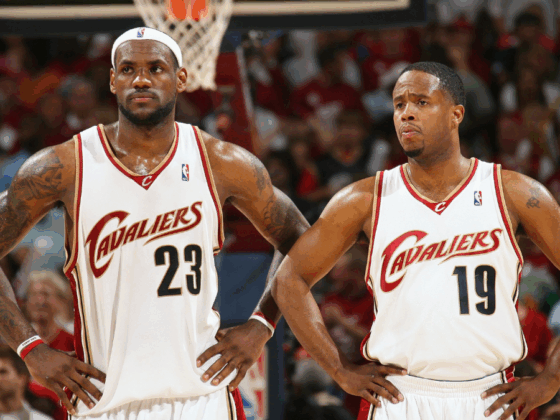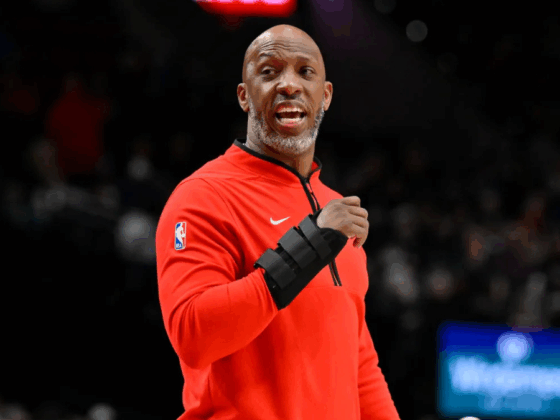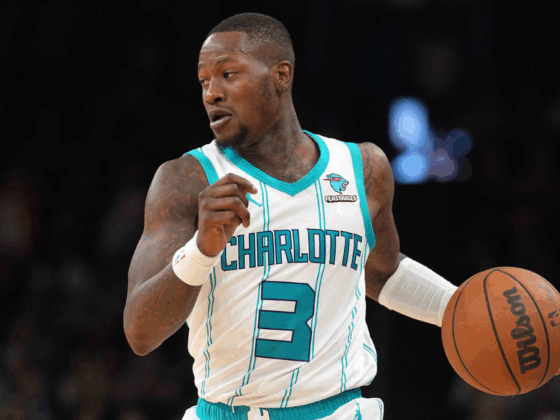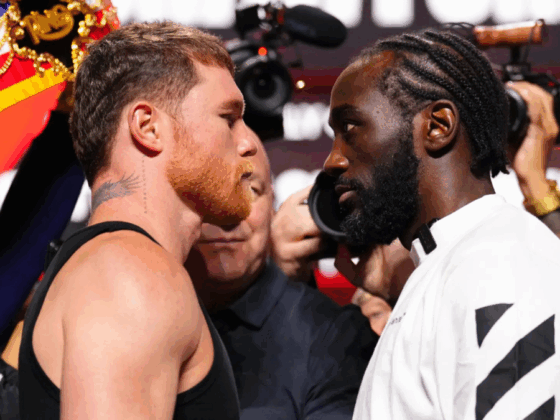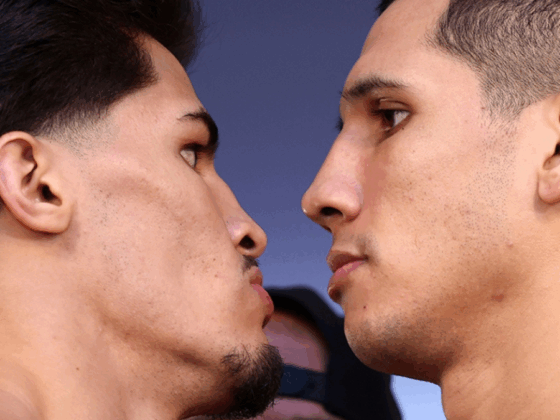
June 30, 2019, will be remembered as one of the most hectic days in league history. Forty percent of players were to be had as free agents during the offseason, so it isn’t surprising that the signings, trades and swaps came so rapidly. What surprised most, even those in the most connected NBA circles who were privy and prepared for a wild NBA free agency, was how it all unfolded.
Shakeups from the big free agents – the ones whose first names start with the letter “k” – drew the most attention and fanfare, culminating in Kawhi Leonard revealing his master plan on a Friday at 2:00 in the morning.
REPORT: Clippers Sign Kawhi Leonard, Acquire Paul George From Thunder https://t.co/VSfY147D82 pic.twitter.com/4sIyJsXHLQ
— Def Pen Hoops (@DefPenHoops) July 6, 2019
But there is a lot more to unpack now that the rubble has settled. What does the 2019 offseason tell us about the NBA? What can we learn from all the commotion to help us better understand the league overall?
Management Trends at a Macro Level
The summer of 2016 changed the NBA forever.
It sank a third of the league into obscurity, allowed the Warriors to form the NBA’s most iconic “super team” and simultaneously brought new value to contract relief and the first-round draft pick.
General managers across the league sent offer sheets to players coming off semi-productive seasons for playoff teams – Timofey Mozgov, Bismack Biyombo, Evan Turner – that were, in hindsight, at best a prayer for a good return on investment. Biyombo will be the Charlotte Hornets’ second-most expensive contract for the next two seasons, collecting a ghastly seventeen million dollars annually.
Later, the stretch provision became many front offices’ weapon of choice, even if the residual cost remains an encumbrance. Luol Deng was the Los Angeles Lakers’ second-highest-paid player last season behind LeBron James.
The league-wide salary cap was forecast to rise steadily into the 2020s, but the expected revenue-sharing figures were lower than anticipated just a season after those projections were released in the middle of the 2015 season.
The cap did eventually rise as predicted, vaulting up from $70 million in 2015-16 to $109 million in 2019-20. The league’s projected spike for the 2016-17 season proved prescient when the cap increased from $70,000,000 to $94,143,000, but the continued steady increases didn’t arrive immediately. The cap only rose $5 million in 2017-18 and $2 million in 2018-19. By 2019, a mid-level player was holding 15, 20 or even 25% of a team’s afforded cap space from their remunerative 2016 contract.
Teams across the league are finally shedding some of these albatross contracts signed three summers ago. But the lesson learned is etched in the minds of front office insiders across the league. There is still a stench of frugality in the halls of NBA front offices.
This unforgiving experience tremendously impacted NBA free agency for much of the league. Either as a direct result or by choice, players from all levels of the cap payscale are intentionally signing shorter and smaller contracts, trading guaranteed income for projected future-earnings opportunities. Front offices are using salary cap exceptions to sign forgotten free agents to minimum deals.
Including first-round picks in trades is slowly becoming acceptable again across the league. The two blockbuster deals of the offseason – the acquisitions of Anthony Davis and Paul George by the two Los Angeles franchises – netted the incumbent Pelicans and Thunder with a bounty of first-round draft assets. The Miami Heat were willing to part with a first-round pick in a sign-and-trade deal to land Jimmy Butler. Golden State felt pressure to see return value from Kevin Durant’s departure, dealing one first-rounder to the Nets in the sign-and-trade that brought back D’Angelo Russell, and subsequently attaching another pick to Andre Iguodala in a trade with Memphis. Even productive role players like Jerami Grant and Malcolm Brogdon cost their new teams a first-round pick.
The shift in front office temperament is a signal of a mindset change across the league: The present is now more certain than the future.
Eastern Conference Contention
The East has been the junior varsity conference for almost a decade now. Last season’s four-team race between the Celtics, Sixers, Raptors and Bucks was the first time a non-LeBron James Eastern Conference team had legitimate title aspirations since the Kevin Garnett Celtics.
The East has reverted back to being a two-team conference, with a collection of mid-tier opposition in the shadows. The Milwaukee Bucks – don’t forget, last season’s No. 1 overall seed – are still a strong outfit built around Giannis Antetokounmpo. Milwaukee’s backcourt scoring, their biggest weakness last season, is arguably worse with the loss of Malcolm Brogdon. But the acquisitions of Robin Lopez, Wesley Matthews and Kyle Korver bolsters the Bucks’ defensive depth and provides necessary spacing around Giannis. Budenholzer laid the framework for a presumed sustained period of success. It clearly showed with Khris Middleton, who quickly re-upped with Milwaukee when the moratorium opened.
REPORT: Bucks Bringing Back Brook Lopez, Khris Middleton https://t.co/Kzn2a4aqXm pic.twitter.com/xWEUN6taDC
— Def Pen Hoops (@DefPenHoops) June 30, 2019
Philadelphia kept its title hopes alive but changed their point of attack. Losing Butler will hurt in clutch late-game situations (assuming Joel Embiid or Tobias Harris don’t show noticeable improvement in the area). The Sixers no longer have a reliable scorer who can create off the dribble. Ben Simmons is fresh off an extension that pays under the assumption he will develop offensively; if that happens, 29 teams would have to adjust to Philadelphia.
Embiid still has the potential to be the best big in the game, given he can stay healthy and play 35 minutes a night. His two-man game with JJ Redick – by the numbers, an elite offensive duo last season – will sorely be missed. Brett Brown faces the difficult task of trying to balance an offensive attack that features one reliable outside shooter in the starting lineup.
It was smart of the Sixers to bring back Harris after losing Butler. Wing scoring is one of the most expensive skills to acquire in the NBA and is much easier to retain than acquire on the open market.
Josh Richardson can develop that part of his game – he’s shown shorter, definitive stretches of efficient scoring ability throughout his career. Playing on a team where he’s not required to be the primary or secondary offensive option will help. It won’t help that he’ll be depended upon to provide spacing for Embiid and Al Horford inside.
Horford is a unanimous top-10 underrated player in the NBA right now, but four years/$109 million for a big man entering his age-34 season is a precarious bet. Pairing Horford with Embiid should increase his longevity, assuming both remain healthy. Horford will provide the Sixers with excellent passing vision, which will prove critical when the offense gets stagnant and opportunities need to be created from thin air. The Horford and Embiid inside-the-arc two-man game should be joyful to watch – plop Embiid in the post and strategically place Horford at the elbow, or vice-versa.
Looking at the remainder of the conference, The Celtics, Pacers and Raptors should all fare well during the regular season in respectable divisions. Watching Kemba Walker in a Celtics uniform should provide an opportunity to rediscover an appreciation for the 5-foot-11 guard’s game.
Indiana did a great job filling in around the margins at the wing. Turner and Sabonis may be the NBA frontcourt of the future. Let’s pray we get a healthy Victor Oladipo for the remainder of next season.
The Raptors should rightfully celebrate throughout the remainder of 2019. It seems premature to prognosticate on today, but it will be interesting to see what happens in the final phase of Kyle Lowry’s career.
The dip in title-contending depth doesn’t mean the East can’t be fun. Atlanta could make a run for the eighth seed.
All-Star Duos
Paul George and Russell Westbrook had two and four years, respectively, remaining on their contracts entering 2019 NBA free agency. Both are now on different teams.
Westbrook’s contract was considered nearly untradeable, and his dedication to the Oklahoma City franchise a symbol of small market commitment. Nothing in the modern NBA is certain.
Kawhi Leonard made the exact move that was foretold in February 2018 – yet it still rang as a shock to fans and league insiders alike. Without serious contemplation on other contenders, George and Leonard are now the best perimeter defensive pairing since Michael Jordan and Scottie Pippen. If the Clippers make a move to get Andre Iguodala, they’ll have the only three players in the entire league capable of guarding LeBron James in a playoff game.
We still haven’t gotten a peek at the Kristaps Porzingis-Luke Doncic pairing. Ditto for James and Davis, whose trade to Los Angeles already feels like it happened a season ago.
Davis and James stand atop the duo power rankings list today; it is such a transcendent pairing, of two players at different arcs in their career. Davis is still just 26 years old, the same age as Buddy Hield. He hasn’t truly entered the prime of his career. Davis received semi-serious consideration for Defensive Player of the Year and Most Valuable Player when he played an entire season in New Orleans. Imagine him getting the looks that Chris Bosh got from James in Miami.
Can Davis stay healthy? Can LeBron?
Waiting and striking out on Leonard resulted in the Lakers running it back with the same unit, sprinkling in DeMarcus Cousins and Danny Green (at an above-market price).
The Lakers will make the playoffs. But is the addition of Davis a Marvin the Martian “just add water” solution to guarantee a top-four seed? How will Frank Vogel and Jason Kidd toe the line of preserving James and Davis for the playoffs while securing home-court advantage? And if they do gain home-court advantage, even the lowlier projected playoff teams in the West are mighty; imagine the Lakers facing the Spurs or Warriors (with a healthy Klay Thompson) in the first round.
Across the corridor, the Clippers have built a strong core around the league’s No. 2 duo. 122.5 is a solid over/under line for games played by George and Leonard during the regular season. Doc Rivers won’t push either given the injuries the two suffered at the end of last season and Kawhi’s medical history. The Clippers have an ecosystem to subsist with either George or Leonard out – they made the playoffs and took the Warriors to six games in the first round without the two superstars.
If George were to play at the same level he did during the first half of the 2018-19 season, the Clippers’ duo would vault ahead of the Lakers’. Leonard isn’t better than James, but he should be considered the league’s top player until proven otherwise. He’s coming off an all-time, top-10 individual postseason performance.
The returning duos of Stephen Curry and Thompson, and CJ McCollum and Damian Lillard, are likely next on the list. Don’t sleep on either the Warriors or Blazers next postseason.
Westbrook and Harden quickly follow. The “stat stuffers” are only this low because neither has shown the ability to be consistently impactful without the ball. How productive can Westbrook be as a catch-and-shoot threat? He always performed efficiently and impactfully as a second banana next to Durant, even it is hard to remember that Westbrook. He also just had a second procedure on his knee in May and shot 29% from beyond the arc last season on 5.6 attempts per game. That’s really, really not good.
REPORT: Russell Westbrook Traded to Rockets for Chris Paul, Two First Round Picks & Two Pick Swaps https://t.co/7SCLhRd9Zq pic.twitter.com/nBMKLR0cz3
— Def Pen Hoops (@DefPenHoops) July 12, 2019
Some combination of the Mike Conley-Donovan Mitchell-Rudy Gobert trifecta deserves a mention, if not for defensive stinginess alone. The Jazz made a lot of strong moves to plug holes across the roster. Conley will be a great mentor for Mitchell and provide him the opportunity to catch his breath off the ball.
Antetokounmpo and Middleton will repeat as All-Stars next season and will likely be the best duo in the Eastern Conference. We’ll see if Horford can secure one more selection to finish out his career – he’ll need to transcend Pascal Siakam, Kevin Love, Andre Drummond and a couple of his teammates. If Tobias Harris can carry the Sixers’ offense through the first half of the season, start punching in Harris-Embiid as a perennial All-Star duo candidate.
Remaining Free Agents & Moves
With the large cohort of free agents coming out this season, a generous faction of the available player pool still has no home for the 2019-20 season. Not all rosters will be finalized before the start of the season. In December, when players acquired in July can be moved, and February, when the trade deadline hits and the buyout market opens, more roster machinations may surface.
The craziest part about the summer of 2019 is that it isn’t over. There is still an abundance of available free agents who played more than 1,000 minutes last season, and others under contract who will be bought out for salary relief. We can’t predict when the next trade request hostage situation will emerge.
Iman Shumpert can provide solid backup wing depth and certain defensive capability for a subpar team. Suitors could include the Thunder, Pelicans or Kings – all of which have aspirations of ducking under the cap but contending for a possible playoff berth. Shumpert makes sense for the Knicks as well, were he to be interested in returning to New York City.
Jonas Jerebko showed flashes of ability for Golden State during the playoffs. Regardless of the Warriors’ interest, the hard cap essentially eliminates them as a suitor. Phoenix could be a strong play for Jerebko with just two small forwards on their roster. In the East, both Chicago and Atlanta need another offensive option to space the floor. It is possible Jerebko ends up on a contender through a buyout later in the season.
Veterans Vince Carter and Devin Harris will most likely find homes before the season tips, though it is hard to determine exactly a roster that requires their respective skillsets. Phoenix is notably light at point guard, but it’s likely Harris would rather sign a veteran minimum contract to return to Dallas. Ditto for Carter, who was vocal about his positive experience in Atlanta last season. Carter shot the 3-ball at a 39% clip last year and should get strong interest from teams looking to fill out around the edges – Chicago, Portland, Sacramento and Orlando all come to mind. Maybe Vince will reverse course and finally go “ring chasing”.
A lot of headliner names still remain on the market – JR Smith, Carmelo Anthony, Joakim Noah, Dwight Howard and Lance Stephenson – though none seem to be great fits for the remaining opportunities across the league.
Noah will receive interest, though likely not at a dollar figure that will persuade him. Memphis could play hardball with the veteran center, hoping that the opportunity to mentor the Grizzlies’ young core will be attraction enough. Noah could also bet on a productive season and take a one-year minimum deal with a team that badly needs a backup big – San Antonio and Atlanta are both strong choices.
The Magic are in dire need of another scoring option, though it doesn’t seem remotely possible either Smith or Anthony end up in Orlando. Lance Stephenson could be another option, but it wouldn’t be impolite to argue he’s on the wrong end of his career arc. Another veteran ballhandler, like the recently waived Shaun Livingston, could provide strong bench minutes and mentorship to Markelle Fultz.
Howard needs to get healthy before he expects to receive any real consideration. The eight-time All-Star can still contribute to winning basketball as a reserve for a good team (if he were to buy into the role). Toronto could be an apt fit, though it is doubtful Masai Ujiri would consider adding Howard if there were any culture concerns. Look at the last three franchises who signed Howard – pre-Travis Schlenk Atlanta, Washington and Charlotte – and note that not one has a track record of signing players for long-term roster building considerations. A healthy and focused Howard could revitalize his career, à la Robert Parish with the ’80s Celtics.
With so much change across the league this summer, some of the best moves are the smallest and simplest to make.
Player dynamics are changing – shorter-term deals, trade requests, player recruitment – and teams must now adapt. Building a strong foundation can lead to even brighter opportunities. Look at Toronto, whose smart cap management in the summer of 2016 allowed it to trade for Leonard and subsequently win a championship. Or Brooklyn and their steady player development and culture building, which persuaded two of the biggest free agents of the decade.
Players, especially stars, are franchise-conscious now more than ever. Smart moves and the precedent set today don’t go unnoticed.
